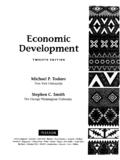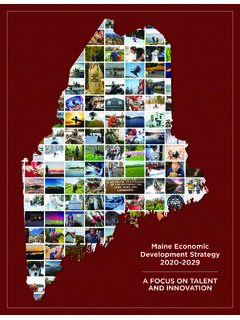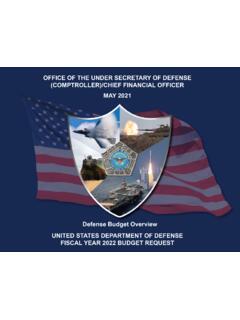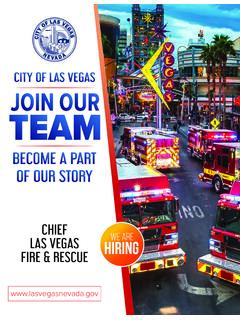Transcription of International Business Environments and Operations ...
1 International Business Environments and Operations Fifteenth Edition Global Edition John D. Daniels University of Miami Lee H. Radebaugh Brigham Young University Daniel P. Sullivan University of Delaware PEARSON. Boston Columbus Indianapolis New York San Francisco Upper Saddle River Amsterdam Cape Town Dubai London Madrid Milan Munich Paris Montreal Toronto Delhi Mexico City S o Paulo Sydney Hong Kong Seoul Singapore Taipei Tokyo Contents Cases with denotes a case that emphasizes a country, cases with denotes a case that emphasizes an industry or Company. Preface 24. About the Authors 40. PART ONE: INTRODUCTION 43. 1 Overview of International Business and Globalization 43. CASE: The Globalized Business of Sports 44. Introduction 47. How Does International Business Fit In? 47. The Forces Driving Globalization 48. Factors in Increased Globalization 49. The Costs of Globalization 54. Threats to National Sovereignty 55. Environmental Stress 55.
2 Growing Income Inequality and Personal Stress 56. ftk Point-Counterpoint Is Offshoring Good Strategy? 56. Why Companies Engage in International Business 58. Expanding Sales 59. Acquiring Resources 59. Reducing Risk 59. Modes of Operations in International Business 60. Merchandise Exports and Imports 60. Service Exports and Imports 60. Investments 61. Types of International Organizations 61. Why International Business Differs from Domestic Business 62. Physical and Social Factors 62. The Competitive environment 64. Three Looking to the Future Ways of Looking at Globalization 65. CASE: Transportation and Logistics: The Case for Dubai Ports World 66. Summary 71. Key Terms 71. Endnotes 72. CONTENTS 5. An Atlas 74. Map Index 82. PART TWO: NATIONAL ENVIRONMENTAL DIFFERENCES 87. 2 Culture 87. GASE: Saudi Arabia's Dynamic Culture 88. Introduction 92. The People Factor 92. Cultural Awareness 93. A Little Learning Goes a Long Way 94. The Idea of a "Nation": Delineating Cultures 95.
3 The Nation as a Point of Reference 95. How Cultures Form and Change 95. Sources of Change 95. Language as Both a Diffuser and Stabilizer of Culture 96. Why English Travels So Well 98. Religion as a Cultural Stabilizer 99. Behavioral Practices Affecting Business 100. issues in Social Stratification 100. Does Geography Matter? Birds of a Feather Flock Together 101. Work Motivation 103. Relationship Preferences 106. Risk-Taking Behavior 107. Information and Task Processing 108. Communications 109. Spoken and Written Language 109. Silent Language 111. Dealing with Cultural Differences 112. Host Society Acceptance 112. Degree of Cultural Differences 113. Ability to Adjust: Culture Shock 113. Company and Management Orientations 114. Strategies for Instituting Change 115. X& Point-Counterpoint Does International Business Lead to Cultural Imperialism? 115. What Looking to the Future Will Happen to National Cultures? 118. (zjjjl CASE: Tesco PLC: Leveraging Global Knowledge 120.)
4 6 CONTENTS. Summary 125. Key Terms 125. Endnotes 126. 3 Governmental and Legal Systems 129. GASE: China Complicated Risks, Big Opportunities 130. Introduction 133. The Political environment 134. Individualism Versus Collectivism 135. Individualistin 135. Collectivism 136. Political Ideology 136. Spectrum Analysis 137. Democracy 138. Totalitarianism 139. The Standard of Freedom 140. Trends in Political Ideologies 141. Engines of Democracy 142. Democracy: Recession and Retreat 143. Authoritarianism's Surge 145. to (he Fimiie Political Ideology and MNEs' Actions 146. Political Risk 148. Classifying Political Risk 149. Classes and Characteristics of Political Risks 149. Point-Counterpoint Proactive Political Risk Management: The Best Approach 151. The Legal environment 153. Types of Legal Systems 154. Trends in Legal Systems 155. Implications for Managers 157. The Confound of Democracy's Retreat 157. Which Rule When? 158. Legal Issues in International Business 160.)
5 Operational Concerns 160. A Key Relationship: Wealth and Regulation 162. Strategie Concerns 163. Country Characteristics 163. Product Safety and Liability 164. CONTENTS 7. Legal Jurisdiction 164. Intellectual Property 164. The Basis of Political and Legal Differences 165. Historical Legacies 165. Economic Circumstances 166. Cultural Orientation 166. The Potential for Cross-National Convergence 167. CASE: It's a Knockoff World 168. Summary 171. Key Terms 172. Endnotes 172. 4 Economic Systems and Market Methods 179. CASE: The Comeback Accelerates 180. Introduction 184. New Markets, New Perspectives 184. International Economic Analysis 187. Does Geography Matter? Consequence of Change in Arctic Sea Ice 188. Economic Freedom 189. Economic Freedom Today 190. The Value of Economic Freedom 191. Trends in Economic Freedom 191. Types of Economic Systems 194. Market Economy 194. Command Economy 195. Mixed Economy 196. Looking to the Future State Capitalism: Detour or Destination?
6 197. Assessing Economic Development, Performance, and Potential 199. Measures of Economic Performance 200. Adjusting Analytics 201. Performance and Potential: Alternative Interpretations 204. Point-Counterpoint Growth: Positive and Productive? 207. Economic Analysis 209. Inflation 209. Unemployment 210. Debt 211. CONTENTS. Income Distribution 211. Poverty 212. The Balance of Payments 215. Elaborating Economic Analysis with Global Indices 215. CASE: The BRICs: Vanguard ofthe Revolution 217. Summary 222. Key Terms 222. Endnotes 223. PART THREE: CONNECTING COUNTRIES THROUGH TRADE. AND FACTOR MOVEMENTS 229. 5 Trade and Factor Mobility Theory 229. CASE: Costa Rica's Trade Evolution 230. Introduction 233. Laissez-Faire Versus Interventionist Approaches to Exports and Imports 233. Theories of Trade Patterns 234. Trade Theories and Business 234. Factor-Mobility Theory 234. Interventionist Theories 235. Mercantilism 235. Neomercantilism 236. Free-Trade Theories 236.
7 Theory of Absolute Advantage 236. Theory of Comparative Advantage 239. Theories of Specialization: Some Assumptions and Limitations 240. Trade Pattern Theories 242. How Much Does a Country Trade? 242. What Types of Products Does a Country Trade? 243. With Whom Do Countries Trade? 246. Does Geography Matter? Variety Is the Spiee of Life 247. The Stades and Dynamics of Trade 248. Product Life Cycle (PLC) Theory 248. The Diamond of National Competitive Advantage 250. Factor-Mobility Theory 252. Point-Counterpoint Should Nations Use Strategie Trade Policies? 253. CONTENTS 9. Why Production Factors Move 255. Effects of Factor Movements 256. The Relationship Between Trade and Factor Mobility 258. Looking to the Future In What Direction Will Trade Winds Blow? 260. CASE: LUKOIL: Foreign Trade and Investment 262. Summary 267. Key Terms 268. Endnotes 268. 6 Trade Protectionism 271. CASE: The Catfish Dispute 272. Introduction 275. Conflicting Results of Trade Policies 275.
8 The Role of Stakeholders 275. Economic Rationales for Governmental Intervention 276. Fighting Unemployment 276. Protecting "Infant Industries" 277. Developing an Industrial Base 278. Economic Relationships with Other Countries 279. Noneconomic Rationales for Government Intervention 282. Maintaining Essential Industries 282. Promoting Acceptable Practices Abroad 282. A Point-Counterpoint Should Governments Impose Trade Sanctions? 284. Maintaining or Extending Spheres of Influence 285. Preserving National Culture 286. Instruments of Trade Control 286. Tariffs 286. Nontariff Barriers: Direct Price Influences 287. Nontariff Barriers: Quantity Controls 289. Dealing with Governmental Trade Influences 292. Tactics for Dealing with Import Competition 292. Convincing Decision Makers 292. Involving the Industry and Stakeholders 293. Preparing for Changes in the Competitive environment 293. Looking to the Future Dynamics and Complexity 293. CASE: D ing Business in Singapore 294.
9 10 CONTENTS. Summary 298. Key Terms 298. Endnotes 298. 7 Economic Integration and Cooperation 301. CASE: Toyota's European Drive 302. Introduction 304. The World Trade Organization Global Integration 305. GATT: Predecessor to the WTO 305. What Does the WTO Do? 306. The Rise of Bilateral Agreements 307. Regional Economic Integration 308. Geography Matters 308. The Effects of Integration 309. Major Regional Trading Croups 311. The European Union 311. The North American Free Trade Agreement (NAFTA) 317. Regional Economic Integration in the Americas 320. Point-Counterpoint v |s CAFTA-DR a Good Idea? 322. Regional Economic Integration in Asia 324. Regional Economic Integration in Africa 326. Other Forms of International Cooperation 327. Commodity Agreements 328. Commodities and the World Economy 328. Consumers and Producers 328. The Organization of the Petroleum Exporting Countries (OPEC) 329. Looking to the Future Will the WTO Overcome Bilateral and Regional Integration Efferts?
10 331. (f h CASE: Unilever Goes East 332. Summary 336. Key Terms 337. Endnotes 337. PART FOUR: THE GLOBAL MONETARY environment 339. 8 Markets for Foreign Exchange 339. CASE: Going Down to the Wire in the Money-Transfer Market 340. Introduction 342. What Is Foreign Exchange? 343. Players on the Foreign-Exchange Market 343. CONTENTS. How to Trade Foreign Exchange 345. Some Aspects of the Foreign-Exchange Market 345. Global OTC Foreign Exchange Instruments 345. Size, Composition, and Location of the Foreign-Exchange Market 346. Does Geography Matter? Foreign-Exchange Trades and Time Zones 349. Major Foreign-Exchange Markets 351. The Spot Market 351. The Forward Market 352. Options 353. Futures 353. The Foreign-Exchange Trading Process 353. Banks and Exchanges 354. Top Exchanges for Trading Foreign Exchange 356. How Companies Use Foreign Exchange 356. Business Purposes (I): Cash Flow Aspects of Imports and Exports 357. Business Purposes (II): Other Financial Flows 358.)












